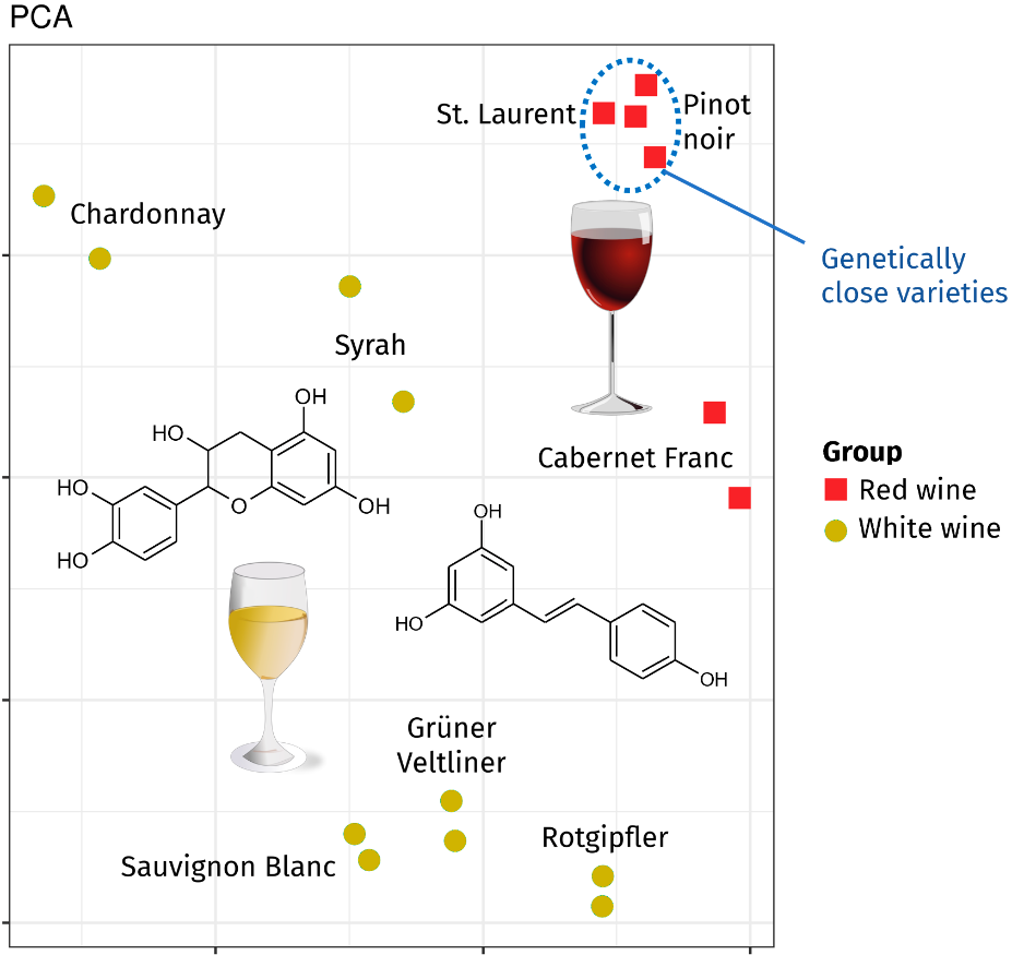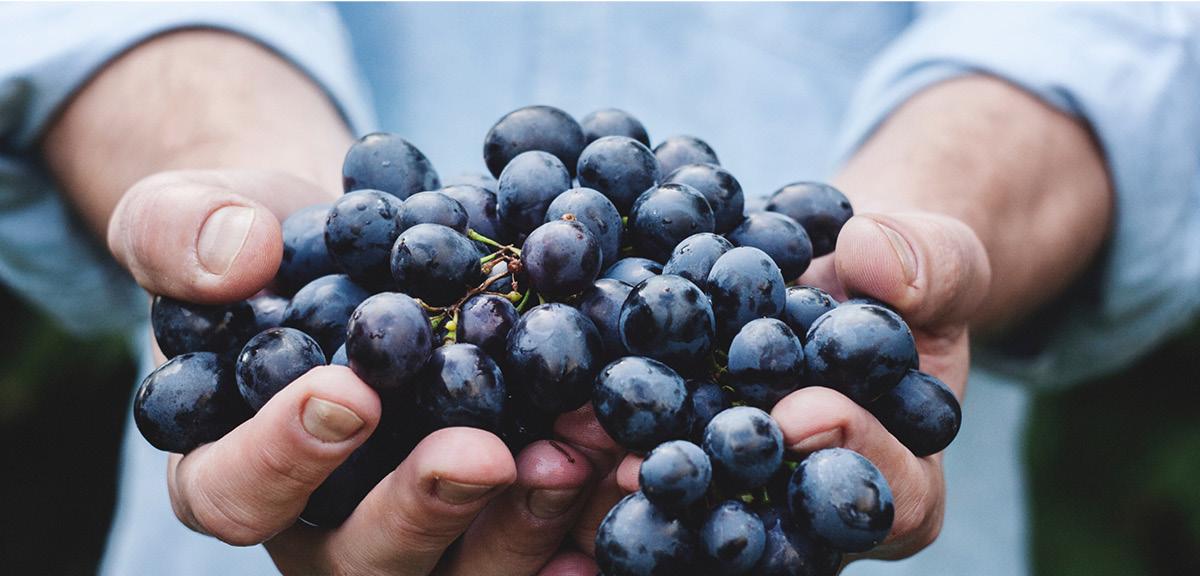January 31, 2020
Did you know that wines have a ‘chemical bouquet’, which is different based on the grape cultivar? We let our mass spectrometer have its own wine tasting and got some interesting results. Wines have a plethora of interesting bioactive compounds, such as resveratrol, and their amount can differ a lot in wine products.
Balanced, earthy, fruity, full-bodied, round, tannic. Those are some of the terms we can use to describe all the layers of smells and aromas, or the bouquet, of wine. But where do these characteristics come from? Most of them originate from the different biochemicals already present in the wine grapes, modified by how the wine was produced, resulting in unique combinations that we may value highly. Not only do these compounds contribute to how the wine tastes, they can also have an impact on our health.
According to FooDB, a database dedicated to the chemical composition of foods, wine contains at least 111 different chemical compounds. Together, they form what could be called the ‘chemical bouquet’ of wine. Most of these compounds are phytochemicals produced by the grape plant, and many of them have been studied for their potential health benefits. Do wines differ in their chemical composition?
With this question in mind, we decided to participate in a wine tasting session with some unusual equipment for a restaurant: a Finnpipette and a bag of Eppendorf tubes. After tasting each wine (and explaining the puzzled waiter what we are planning), we took samples of each wine to be taken to our lab to let our mass spectrometer have a chance to have its own wine tasting on a molecular level.
When we looked at the whole data including all the detected signals from compounds, we could easily see that red wine and white wine are clearly different in their biochemical content, as suggested already by their taste and appearance, which are related to the chemical composition. What we could also observe was that the grape varieties were the main source of the difference, with genetically related varieties, such as Pinot noir and St. Laurent, being close to each other, as shown in the figure below.
How about the individual phytochemicals in wine? Resveratrol is the most studied compound in wine and thought to be one of the main compounds behind the health benefits of moderate consumption of wine. We compared the resveratrol levels between each wine and found that St. Laurent contained the highest amount, more than twice as much as in Pinot noir and four times as much as in the third red wine analysed, Cabernet Franc. The lowest level of resveratrol we observed in Chardonnay, which was almost 60 times less than in St. Laurent. Thus, these initial results suggest that it does matter which wine or grape variety you choose if you are looking for potential health benefits. However, it’s good to keep in mind that there are several other phytochemicals in wine that may contribute to the effects, and the evidence be-hind the mechanisms how the compounds actually work in our bodies is still not conclusive.

Is it wise to start consuming the most phytochemical-rich red wines? While there is evidence that consuming small quantities of wine as part of a healthy diet decreases the risk of cardiovascular disease and mortality, alcohol itself contains a risk of addiction and severe health problems associated with abundant drinking habits. Therefore, if you haven’t consumed alcohol thus far, it may be better to continue avoiding it. However, there is also an increasing number of alcohol-free options that contain the same bioactive molecules without the risks of alcohol.
Ville Koistinen
Afekta Technologies
